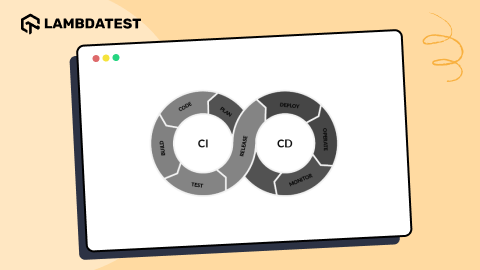Quality Assurance vs Quality Control: Key Differences
Zikra Mohammadi
Posted On: November 26, 2024
![]() 88398 Views
88398 Views
![]() 11 Min Read
11 Min Read
Quality is crucial in software development to meet customer expectations and build a strong brand. The quality management team ensures to follow two key concepts: Quality Assurance (QA) and Quality Control (QC). Though often used interchangeably, they serve different purposes.
For the quality management team, it is important to understand how quality assurance differs from quality control and vice versa. Knowing the difference between quality assurance vs quality control helps the team choose the right approach to deliver high-quality software.
TABLE OF CONTENTS
What Is Quality Assurance (QA)?
Quality Assurance (QA) ensures software products meet specified requirements and function reliably before reaching customers. It involves systematic procedures across the software development lifecycle, from design to testing.
It focuses on defect prevention by identifying issues early in development, reducing the likelihood of major bugs later. This ensures the product performs as expected in various environments and meets user expectations.
An effective QA process provides feedback to developers, helping refine and enhance the software to align with user needs and industry standards.
What Is Quality Control (QC)?
Quality Control (QC) is a quality management activity focused on detecting and correcting errors in a final product through testing, inspection, and review against established quality standards. It involves routine inspections and tests during production to identify deviations from quality standards, ensuring the finished product is consistent, reliable, and meets customer expectations.
 Note
NoteImprove your software quality by eliminating bugs and ensuring robust quality assurance and control processes. Try LambdaTest Today!
Now that you have learned about quality assurance and quality control, let’s further learn the core differences between quality assurance vs quality control.
Quality Assurance vs Quality Control
Understanding the distinction between quality assurance vs quality control is important for the quality management team for delivering quality results in software development. Both are fundamental components of the software quality management process but differ in techniques applied, the nature of work, and their goals.
QA aims to optimize processes to prevent the emergence of defects, whereas QC focuses on detecting and correcting errors in the final product.
The table below compares the essential aspects of quality assurance vs quality control in depth, illustrating their distinguishing features and how they work together to achieve quality objectives.
| Aspect | Quality Assurance | Quality Control |
|---|---|---|
| Objective | It ensures the processes are adequate to produce the desired quality. | It ensures the final product meets the specified quality standards. |
| Purpose | It focuses on proactive steps to ensure quality. This includes improving processes, providing training, and conducting regular audits to identify potential issues before they arise, aiming to prevent defects from occurring in the first place. | It involves reactive measures, such as testing and inspection, to verify that the product meets quality standards. It detects flaws and ensures that the final product meets the required specifications, correcting any issues found before delivery. |
| Focus | It focuses on improving and optimizing the processes used to develop the product. By enhancing these processes, QA ensures that the final product consistently meets quality standards. This includes establishing protocols, rules, and best practices that guide the development team throughout the project. | It focuses on inspecting and testing the final product to ensure it meets the required quality standards. Unlike QA, which improves processes, QC concentrates on the result, identifying defects or non-compliance with quality standards in the finished product. |
| Nature | It focuses on preventing defects as they occur by improving processes or setting standards. This includes anticipating problems and focusing on them at such an early stage of their development that defects are ruled out, and quality is obtained. | It focuses on the detection and correction of defects in the final product, which includes inspection and testing after development to ensure it meets quality standards. It aims to identify and fix any problems that have occurred before the product reaches the customer. |
| End-to-End Quality Coverage | It covers the entire Software Development Life Cycle (SDLC), from initial planning to final maintenance, ensuring quality at each stage. This comprehensive approach ensures quality is embedded throughout the project. | It is part of the Software Testing Life Cycle (STLC) and focuses on testing and validating the product once the development stages are completed. It ensures that the final product is free of defects and meets the specified quality standards before launch. |
| Responsibility | It involves collaboration across various teams and departments within the organization. It requires cross-functional involvement to build and sustain processes that ensure quality at every stage of development. | It is typically carried out by specialized teams dedicated solely to testing and inspecting the final product. These teams focus exclusively on identifying flaws in the product before it reaches the customer. |
| Component Quality Coverage | It takes a holistic approach by covering the entire system or production process. It aims to improve the entire workflow to ensure that each step contributes to the overall quality of the finished product. QA focuses on enhancing processes to prevent defects at all stages. | It focuses on specific parts or components of the product. It inspects individual sections to identify and correct defects. QC ensures that the components of the product meet the quality standards before being assembled into the final product. |
| Process and Product Validation | It is focused on the development of methods, standards, and frameworks that guide the production process. It involves creating quality criteria and quality plans and implementing quality management systems to prevent issues during the development stages. | It focuses on verifying the final product after its production. It tests the product to ensure that it meets the defined specifications and is free of defects. QC confirms that the end result aligns with the expected quality standards. |
| Tool | It is focused on improving and controlling processes to ensure quality at every stage of development. QA testing tools emphasize preventing issues before they arise, and tools like process mapping, root cause analysis, and quality management systems are commonly used to enhance processes. | It is focused on inspecting and testing the final product to ensure it meets the specified quality standards. It’s more about identifying defects or non-compliance in the product after it’s produced. Checklists, control charts, and testing software are typical tools used to detect flaws during the inspection phase. |
| Examples of Activities | Activities include code reviews, process audits, and training sessions. | Activities include unit testing, integration testing, and acceptance testing. |
After understanding the difference between quality assurance vs quality control, the QA team must choose the right approach. However, QA and QC complement each other, working together to achieve overall quality objectives.
QA teams must adopt a proactive approach to ensure product quality by preventing defects at earlier stages of development. They can automate the QA process through QA automation or enhance it further by leveraging Gen AI tools that help improve processes, predict potential issues, and optimize testing strategies.
While AI can significantly enhance the QA workflow, QC will still play a crucial role in testing the final product to ensure it meets the established quality standards.
Subscribe to the LambdaTest YouTube Channel to get more videos related to QA and QA testing and more.
Aligning Teams with Quality Goals: The Role of QA and QC Processes
To maintain quality, it’s essential to align the team with the goals and objectives of the project. The quality assurance vs quality control distinction plays a vital role in this alignment. The QA process focuses on creating and improving systems, defining quality standards, and ensuring those standards are integrated into every phase of the development lifecycle. QA teams work collaboratively across departments, emphasizing proactive strategies to prevent issues before they arise.
On the other hand, the QC process is focused on verifying the final product against set standards. QC professionals test and inspect the product to detect any defects or inconsistencies. They play a critical role in identifying problems after production, ensuring that only products meeting the highest quality standards are released.
Both QA and QC processes rely on skilled professionals who are committed to the quality goals. Their collaboration ensures that quality is maintained throughout development and delivery, contributing to the overall success of the project.
To further enhance the alignment of your teams with quality goals and ensure both QA and QC processes are effective, QA teams can use cloud-based platforms like LambdaTest that provide a comprehensive environment for both QA and QC activities, enabling teams to automate testing, detect bugs early, and collaborate efficiently across different stages of the software development lifecycle.
LambdaTest is an AI-powered test execution platform that allows QA teams to perform manual and automated QA testing at scale across 3000+ browsers and OS combinations.
This platform not only supports QA efforts in proactively identifying issues but also strengthens QC by ensuring that the final product meets the highest standards of quality before it reaches customers. It helps streamline your workflow, making it easier for QA and QC teams to work together towards achieving quality goals faster and more effectively.
Conclusion
In conclusion, understanding the distinct roles of quality assurance vs quality control is essential for developing high-quality software. Quality assurance is a proactive approach that embeds quality into every phase of development, while quality control is reactive and focused on detecting faults in the final product. This dual approach enhances software reliability and customer satisfaction.
Knowing the difference between quality assurance vs quality control helps professionals in quality management make informed decisions, ensuring the successful delivery of quality software.
Frequently Asked Questions (FAQs)
What Is the Difference Between QA QC and Tester?
QA sets the standards, QC guarantees compliance, and testing ensures quality. This collaborative method quickly detects and fixes difficulties, resulting in a high-quality product before it reaches the end customer. Together, these stages ensure that the product fulfills the necessary criteria.
What Is the Difference Between Quality Control and Quality Audit?
Quality auditing is an essential part of the ISO 9001 quality system standard and is considered an integral aspect of the quality management system. Quality control is defined as the process of creating standards and testing to verify that a product or service is completed appropriately.
Can QA and QC Be the Same Person?
While certain quality assurance and quality control activities overlap, they are defined differently. QA tasks and responsibilities typically encompass almost every aspect of the quality system in some way, whereas QC is a subset of QA activities.
What Are the 4 Types of Quality Control?
There are four types of quality control: process control, control charts, acceptance sampling, and product quality control. While a control chart helps examine changing processes over time, process control and product quality control help monitor and change products to meet the criteria.
Got Questions? Drop them on LambdaTest Community. Visit now














